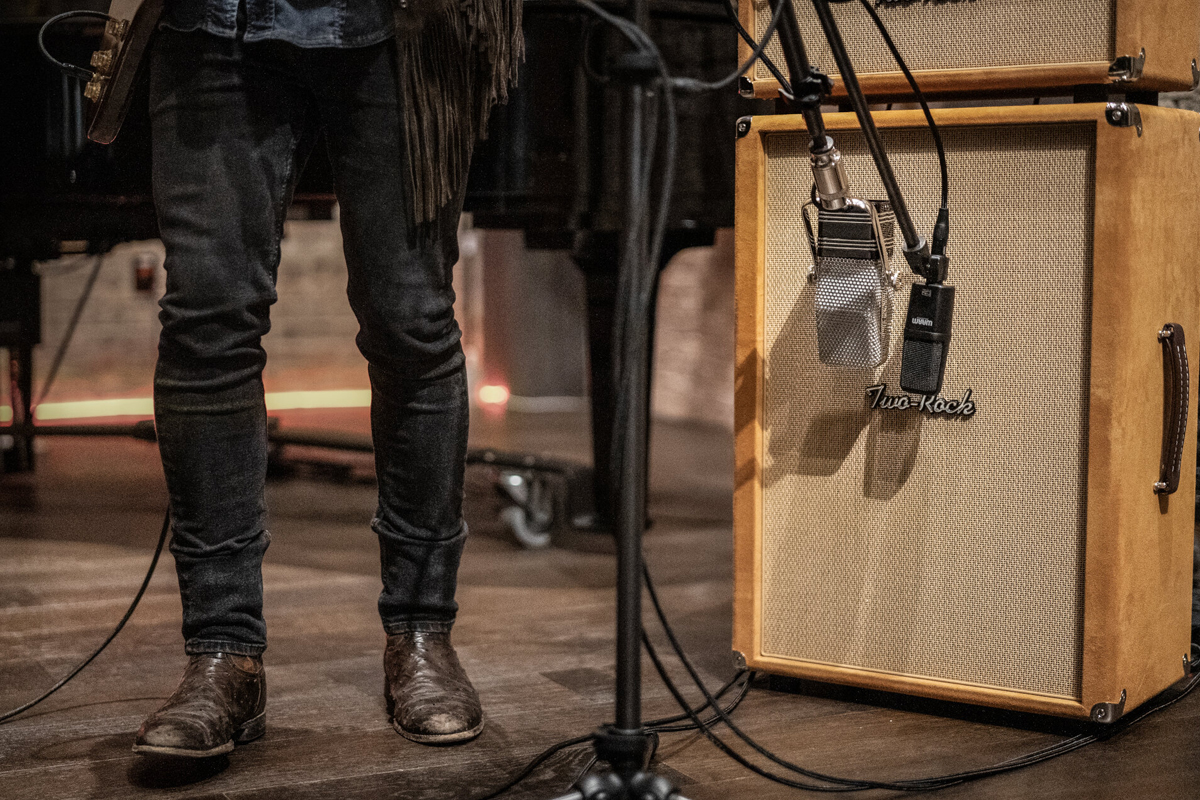The iconic Ribbon Microphone Warm Audio WA-44
Undoubtedly, the RCA 44 is the most iconic ribbon microphone of all time. Can Warm Audio's recreation live up to the legend?
Warm Audio's evolution is one of the most impressive success stories in the industry in recent years. Starting quietly in 2011, it managed to become a dominant force in the professional audio space, while staying true to its core business strategy. Its mission, which is none other than to make classic recording equipment accessible to everyone! ... And as the company grows, its vintage recreations are becoming increasingly ambitious.
Particularly impressive is the reproduction of the AKG D19. From what we know, the WA 19 is the first attempt at a faithful recreation of a vintage dynamic microphone with a moving coil, and as such, it must have required an enormous amount of work. Essentially, almost nothing in this microphone was available as an off-the-shelf component, so it undoubtedly represents a significant investment in specialized tooling and research and development on Warm Audio's part.
Four & 40
The WA 19 actually arrived in the same box as the microphone in this review, but the two have very little in common beyond the fact that they are recreations of older microphones. It’s not hard to guess which microphone the WA 44 is emulating — but, as it turns out, things aren’t as simple as they seem. The ultimate reference point is, of course, the classic RCA 44 ribbon microphone. However, unlike the WA 19, the WA 44 is neither the first nor the only tribute to the microphone it is based on, and this is where the real interest begins.
If you were to try to recreate the RCA 44 down to every last detail, you’d be faced with some difficult challenges. First of all, the original was a moving target, so you’d need to decide exactly which version of the 44 you wanted to replicate (most manufacturers, like Warm Audio, choose the later BX version). Whichever model you go for, you’d need to track down the right formulation of AlNiCo magnet material, in exactly the right shape. You’d then be faced with the same problems RCA had in achieving a usable sensitivity level from these relatively weak magnets. And you’d also have to commit to replicating various less than perfect design and manufacturing choices, some of which could have an impact on warranty returns or risk shipping damage.
Consequently, none of the RCA 44 inspired mics on the market that I know of is strictly speaking a 100 percent accurate copy of the original. They all use modern neodymium magnets rather than old school AlNiCo, and they typically incorporate other design changes too. In some cases these are trivial, or designed only to improve the robustness of the construction, but some are functional: most copies omit the RCA’s ribbon tensioning mechanism and Music/Speech switch, for example. In other cases, the modifications are much more radical, as in Cloud’s 44 mics, which house a 44 style ribbon motor in a surprisingly compact and lightweight shell.
So, when Warm Audio claim to have developed a “faithful recreation of the most iconic studio ribbon mic of all time” almost 1.000€ and that the WA 44 is “manufactured with exacting quality standards to match the most prized original 1930s era RCA 44 BX vintage mics”, what exactly do they mean?
Heavyweight Champ
One glance at the packaging is enough to tell you that Warm Audio haven’t followed Cloud in making the 44 design smaller and lighter. The WA 44 is more than a foot long, weighs nearly 3kg and ships in an enormous padded case. It faithfully replicates the look and feel of the original 44 BX, with its sloped grilles, smart chrome stripes and subtly altered ‘meatball’ badge; but close inspection reveals that there are a few differences. For example, if you examine the body of an original 44 BX, you’ll see a single pair of screws on either side. These are a bit underspecified for the moderately important job of holding the entire mic together, and are a common failure point if the 44 is dropped or struck. So if you look at an ‘improved’ modern version of the mic such as, for example, AEA’s R44, you’ll notice that they’ve added a second pair of screws on either side to make the whole thing more robust. And if you look at the WA 44 — well, Warm Audio have done exactly the same thing.
This is a theme that extends to the interior of the mic, too. Using modern neodymium magnets in place of the RCA 44’s giant AlNiCo horseshoe magnets requires some changes to the design and construction. Done right, these shouldn’t affect the sound: magnetism is magnetism, and as long as the geometry of the pole pieces either side of the ribbon is correct, what’s going on elsewhere should make no difference. But in order to make this work in their R44, AEA had to fashion new parts in order to extend the magnetic field from the comparatively small neodymium magnets to the pole pieces. AEA also worked with Cinemag to develop a new output transformer for the R44, since the original used by RCA was long out of production. In both cases, the WA 44 uses what appear to be identical components.
In short, then, the WA 44 is certainly a recreation of the RCA 44 BX; but it’s one that closely duplicates the changes and improvements AEA pioneered in the R44. There’s no official tie up between the two companies, so I can only speculate as to how this will go down in Pasadena. However, the fact that Warm Audio have brought their version to market at less than a quarter of the cost of the R44 is undeniably impressive, especially given that there’s no sign whatsoever of corners being cut in the design or manufacturing. There was a time when marketing an affordable homage to the RCA 44 would have meant stuffing a generic ribbon motor inside a vaguely authentic housing and hoping for the best. Warm Audio really have gone the extra mile here.
Opting for the ‘full fat’ approach does mean that the WA 44 shares a few drawbacks with both the RCA 44 BX and the R44. Its size and weight mean you need a hefty mic stand, and it would be difficult to use two as a coincident pair. On the review mic, the shiny finish on the yoke parts also made it hard to apply enough friction to hold the mic stable in a horizontal orientation, though this would be easily fixed with some sandpaper.
Conclusion
On paper, then, Warm Audio have got everything right in terms of construction. But the proof, as always, is in the pudding, or in this case, the listening. And the WA 44 doesn’t just look like an RCA 44: it sounds like one. In fact, we measured it against a well maintained 44 BX in a test chamber, and there were only two significant differences. One was that the WA 44 was about 3dB more sensitive than the RCA, presumably because those neodymium magnets are generating a stronger field at the ribbon. The other was a slight discrepancy at the low end, which is most likely down to a difference in ribbon tension between the two mics. Were the WA 44 to be re ribboned, as is frequently necessary with ribbon mics, this would probably change, and a good mic tech could adjust it to taste.
This isn’t just a great mic for the money. In terms of construction, component choice and sound, it’s as good as handmade 44 clones costing several times the price.
It seems redundant to try to describe the sound of a mic as well known as the RCA 44. If you’re in the market for the WA 44, you’ll almost certainly know what you’re hoping to get from it, and the question is whether it too delivers ‘that sound’. The answer is ‘hell yes’. This isn’t just a great mic for the money. In terms of construction, component choice and sound, it’s as good as handmade 44 copies costing several times the price. With the WA 19 and now the WA 44, Warm Audio are taking cloning to the next level.
Warm Audio’s take on the classic RCA 44 BX adopts the sensible design improvements pioneered by AEA, and there’s no sign whatsoever of corners being cut to meet a price. Impressive!
AthensProAudio Team ©


















